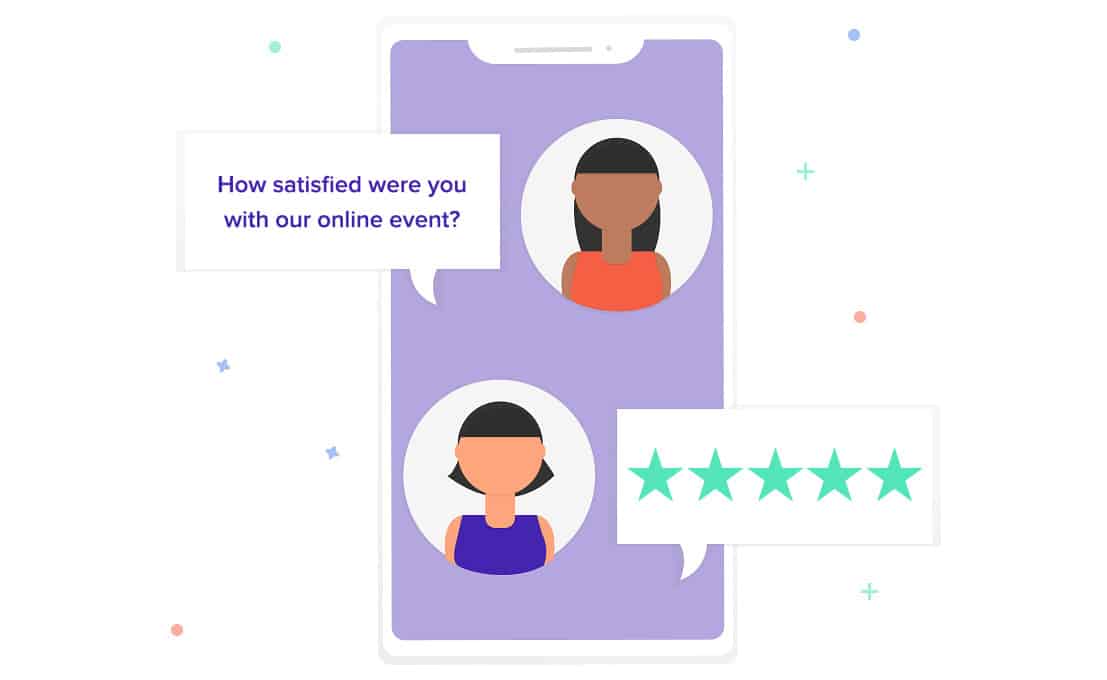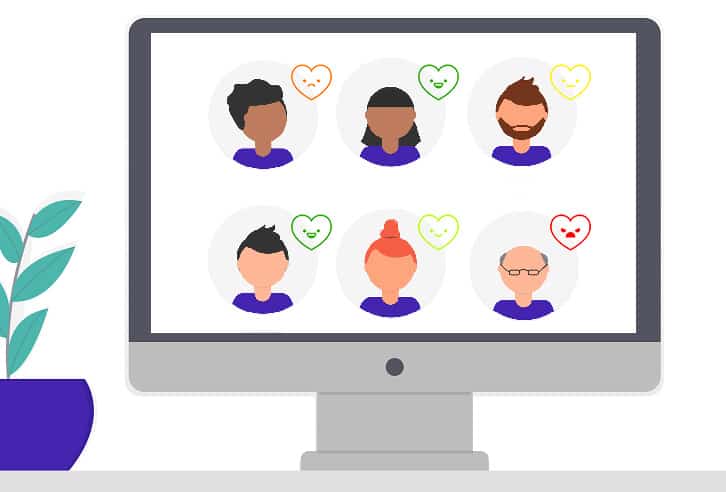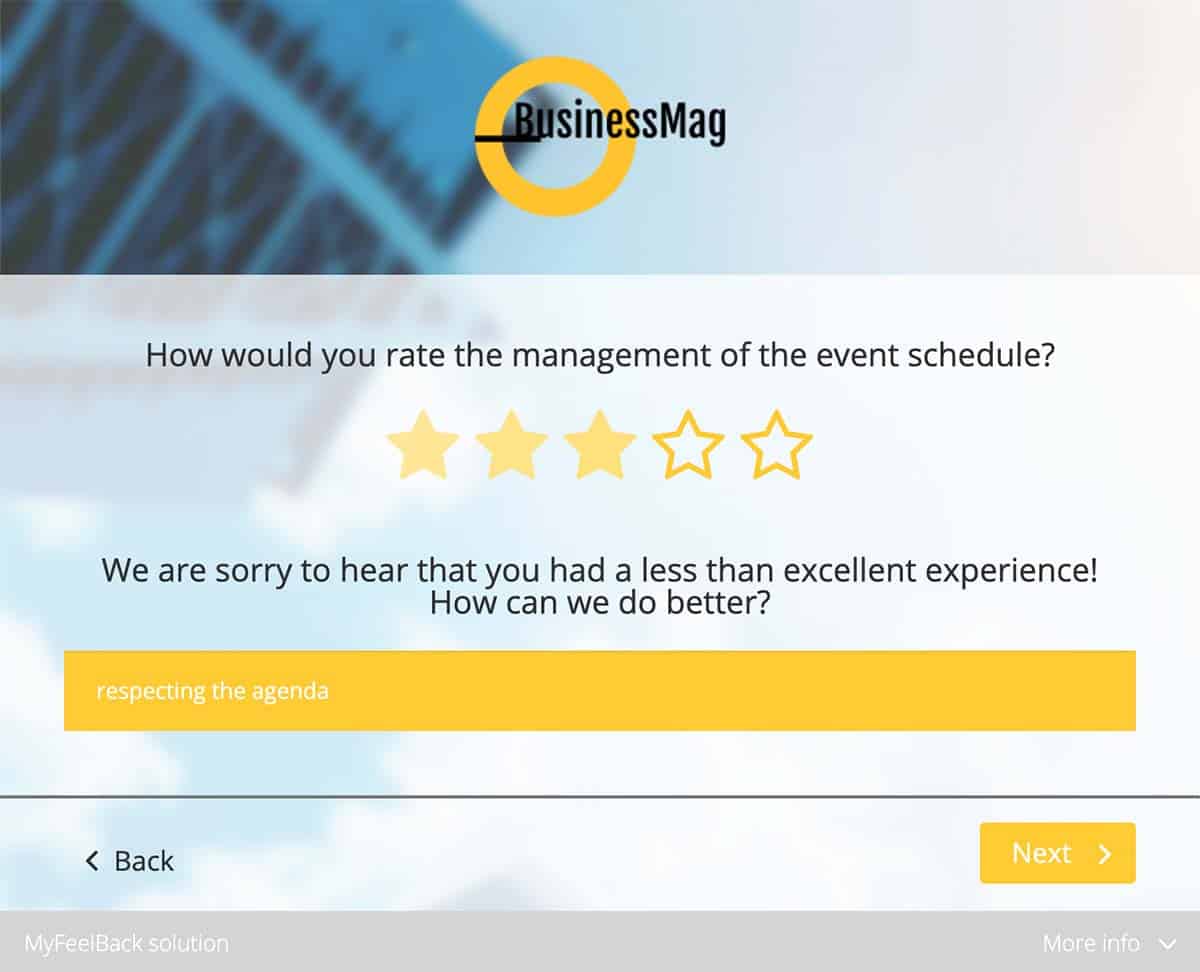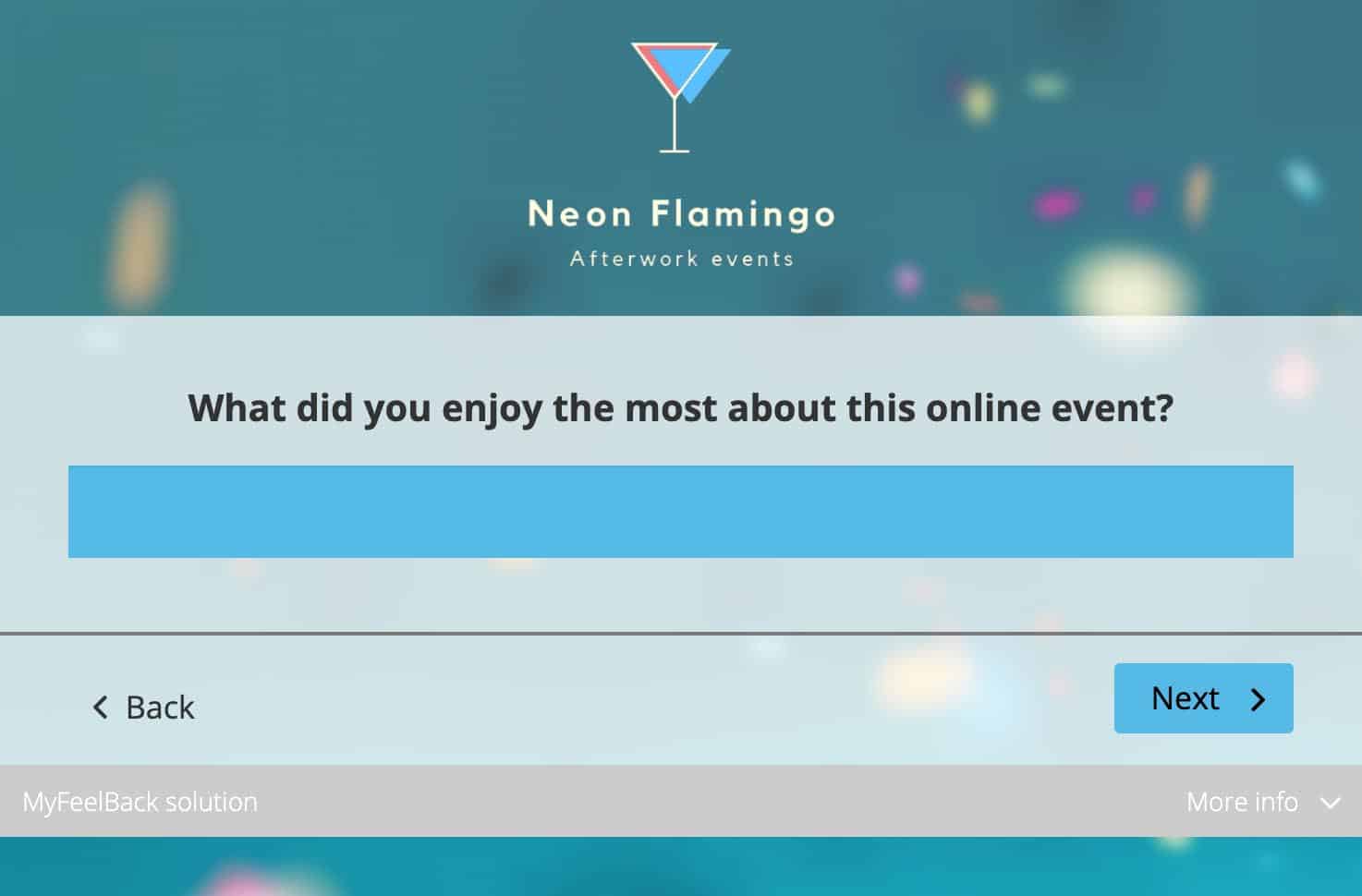In light of the current health crisis, the events industry has been forced to adapt and move 100% online. How can you offer participants to online events an equally satisfactory experience as for in-person events? How can you make your online events more appealing and more efficient? Well, you can start by measuring your participants’...
In light of the current health crisis, the events industry has been forced to adapt and move 100% online.
How can you offer participants to online events an equally satisfactory experience as for in-person events? How can you make your online events more appealing and more efficient?
Well, you can start by measuring your participants’ satisfaction!
This article will present you with a few ideas to efficiently measure your participants’ satisfaction with your online events. We will list 10 questions that you can include in your satisfaction survey.
A Few Tips to Measure Satisfaction with an Online Event
Here are 3 key tips to measure and manage the satisfaction of participants to your online events.
Tip 1 – Send Surveys Immediately After the Event
We often come back to this, and the tip applies to most surveys – you should always favour “immediate” surveys, meaning deployed shortly after the event or interaction you want to measure. And therefore avoid “delayed” surveys, sent out of context several months later!

For example, if you want to measure your call centre agents’ ability to handle customer requests quickly and efficiently, your satisfaction survey should be sent to the customer a few seconds after the interaction.
This piece of advice also applies to measuring satisfaction with online events. You should send your survey quickly after the event to measure overall satisfaction with your online event, whether a show, conference, webinar, masterclass, online seminar, etc. “Quickly after” means a few hours after, or 2 to 3 days later at the very most.
Tip 2 – Consider Deploying Short “Snapshot” Satisfaction Surveys
You can also send “snapshot”, or “live” satisfaction surveys, which will provide you with even more immediate feedback that those sent immediately after an event. To do so, send your survey during the event.
The idea is to measure the participants’ interest in the event as it unfolds, and to measure how this interest evolves. This is an excellent way of identifying areas for improvement for your online events and your participants’ preferences.

These “live” surveys should of course be deployed on a suitable channel: event website or platform, SMS, mobile app.
Tip 3 – Adjust the Length of your Surveys
As explained above, you can choose between two different survey formats to measure satisfaction with your online events:
- “Immediate” surveys, sent shortly after the end of an online event: a few minutes, hours, or at the most, days later. The aim is to measure the satisfaction of participants with the online event as a whole, providing a general overview.
- “Live” surveys or “snapshot” surveys sent during the online event.
Immediate and live surveys don’t follow the same logic.
Surveys sent immediately after an event can be longer and measure everything at the same time:
- Overall satisfaction with the event and its organisation.
- Satisfaction with specific aspects, such as the content/presentation of a specific session.
These surveys can include 6 to 7 questions, or even more. Below are some examples of questions to include in your surveys.
“Live” surveys, on the other hand, sent during an event, should be very short. They should not disturb the participant’s experience. We recommend limiting these surveys to one simple question, the CSAT question:
“Are you satisfied with [the current event or session]?”

The participant should be able to answer quickly, in a single click. We recommend using a graphic rating scale, with smiley faces for example.
10+ Examples of Satisfaction Questions to Ask Participants to your Online Events
Remember that these surveys aim to measure participant satisfaction with your online event. The objective is to identify areas for improvement & progress for your next online events.
You should therefore make a list of all the items likely to influence your participants’ satisfaction. Below are a few example of classic questions, that apply to most online events.
Question 1 – How would you rate the event as a whole?
One of the advantages of post-event surveys, is that the respondent can take a step back and rate the event as a whole. Participants will have had time to reflect on their experience of the event. We recommend asking them about how they rate the overall event with this first question.
Question 2 – On a scale of 1 to 10, how likely are you to recommend this event to a friend or colleague? (NPS)
This question consists in measuring your participants’ likelihood to recommend your events to their family and friends (B2C) or colleagues (B2B). This is the “NPS” question that we often talk about on the MyFeelBack blog. The Net Promoter Score is a valuable satisfaction indicator, with lots of use cases.

Question 3 – What did you think of the quality of the talks?
This question goes into a bit more detail. The quality of the talks is key to a successful event, whether online or in person.
If your online event has several speakers and sessions, you can use a matrix and checkbox system to enable participants to rate each talk more quickly.
Question 4 – How would you rate the management of the event schedule?
Were the talks/sessions on time? Were there any delays? Or last minute changes? This is not a trivial question to ask participants to your event. Time-keeping is key to a successful event.

Question 5 – How would you rate the length of the event?
This question completes the last one. It allows to assess the timings of your event: was it too long? Too short? Satisfactory? The answers to this question will help you improve the format of your next online events.
Question 6 – What did you enjoy the most about this online event?
This simple question will help you identify your event’s strong points. You could ask this as:
A closed question with several possible answers to choose from.
An open question.

Question 7 – What did you enjoy the least about this event?
It is also important to identify the weaknesses of your event, or the things that your participants were less pleased with. This will help you identify areas for improvement and to better understand your target audience’s expectations and preferences.
Questions 8, 9 and 10 – 3 questions to measure customer effort (CES)
We suggest asking three questions to measure the effort your participants put into accessing and taking part in the event. We suggest using the Customer Effort Score indicator, or CES. This indicator is not as well-known as the NPS, but it is widely used. It enables to measure the level of effort spent by the respondent to accomplish a given task. It is the perfect indicator for identifying irritants and friction on the customer journey.
The CES question can be phrased as follows:
“How much effort did you have to put in to [Action]?”
Below are three examples of how this question can be used to measure satisfaction with an online event. “How much effort did you have to put in to:
- Accessing information about the event? (Question 8)
- Signing up to the event? (Question 9)
- Connecting to the event platform? (Question 10)
2 Bonus Questions to Complete the Survey
We recommend ending your post-event survey with an open-ended question that will enable you to collect verbatims from your participants. Here are two examples of open-ended questions (one is enough!):
- In your opinion, how could we improve our future online events?
- Do you have any suggestions or comments to add about the event?
You now have everything you need to deploy post-online event surveys. We hope that you found this article useful. Now, over to you!







![Online Events: Measuring Satisfaction [Examples of Questions]](jpg/online-events-measuring-satisfaction-questions.jpg)
